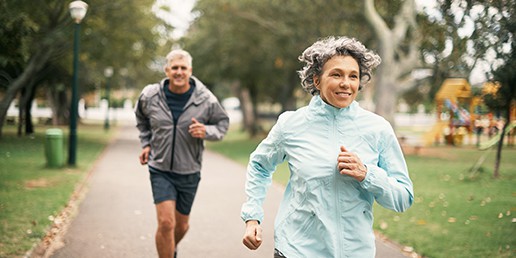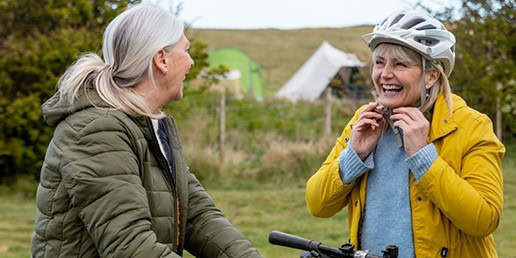Serious symptoms and safety netting
Spotting a Sick Child
Some links on this page have been colour coded to make it easier to find the information you need:
As the NHS suggests
“It can be difficult to tell when a baby or toddler is seriously ill, but the main thing is to trust your instincts. You know better than anyone else what your child is usually like, so you’ll know when something is seriously wrong.”
“Is your baby or toddler seriously ill?”. The NHS website. Retrieved 29th January 2024
As well as trusting your instincts it is also worth knowing about the symptoms and signs of serious illness and when should take action, which is covered on this page.
When you should worry and what to do
The traffic light system (with red, orange and green coloured tables) is used for identifying risk of serious illness in common presentations such as with fever (high temperature), rashes, difficulty breathing, accidents and more. The red table for each presentation includes features which would suggest urgent help is needed at a hospital emergency (A&E) department.
From Healthier Together – What 0 to 18
provides excellent simple information including the traffic light system covering the ages 0 to 18. This is a good place to start. Scroll down each page to find the traffic light system information.
- Concerned about your baby aged less than 3 months? Concerned about your baby aged less than 3 months? :: Healthier Together
- Worried now about your child (aged 3 months and over)? Worried now about your child (aged 3 months and over)? :: Healthier Together
From the NHS
Provides a simple article on serious illness
Is your baby or toddler seriously ill? Is your baby or toddler seriously ill? – NHS
Further information
Further more detailed information includes:
SAFETY NETTING
It is likely you have been sign posted to information on spotting a sick child, as part of a process called “safety netting.” This is explained in detail under
In summary:
“Safety-netting advice is information shared with a patient or their carer designed to help them identify the need to seek further medical help if their condition fails to improve, changes, or if they have concerns about their health.”
Peter Edwards et al. Published in British Journal of General Practice. November 2019.
A BOOKLET TO DOWNLOAD
From the PRIME Centre Wales
An excellent booklet developed by Division of Population Medicine, Cardiff University, which is worth downloading “when should I worry” When should I worry?
Use for children over 3 months as explained in the booklet.
High temperatures (Fever)
As the NHS points out in most cases of high temperature
“you can usually look after your child or baby at home. The temperature should go down over 3 or 4 days.”
There are occasional situations when a high temperature is combined with other symptoms and signs and you should then attend A&E. The list below includes symptoms and signs of sepsis (including meningitis septicaemia)
Call 999 if your child:
- has a stiff neck
- has a rash that does not fade when you press a glass against it (use the “glass test” from Meningitis Now)
- is bothered by light
- has a fit (febrile seizure) for the first time (they cannot stop shaking)
- has unusually cold hands and feet
- has blue, pale or blotchy skin, lips or tongue
- has a weak, high-pitched cry that’s not like their normal cry
- is drowsy and hard to wake
- is extremely agitated (does not stop crying) or is confused
- finds it hard to breathe and sucks their stomach in under their ribs
- is not responding like they normally do, or is not interested in feeding or normal activities”
There is more information about controlling a temperature and also when you should call 111 or ask for an urgent GP appointment in the article “High temperature”
- High temperature (fever) in children High temperature (fever) in children – NHS
- Meningitis Meningitis – NHS
From the NHS
- High temperature (fever) in children High temperature (fever) in children – NHS
- Symptoms of sepsis and what to do Symptoms of sepsis – NHS
- Sepsis Sepsis | NHS inform
From Patient info
- Fever in Children Fever in Children (High Temperature): Causes and Treatment | Patient
- Sepsis Sepsis (Septicaemia) | Symptoms and Treatment | Patient
- Sepsis warning signs you need to know The warning signs of sepsis | Sepsis symptoms | Patient
- Child sepsis safety net Child Sepsis Safety Net | Patient
From the Sepsis Trust
- How to spot sepsis in adults and children About Sepsis – Sepsis Trust
- Some good leaflets Resources – Sepsis Trust which you can download particularly “Spotting sepsis in children” (a good check list).
From NICE
- Identifying people with suspected sepsis Recommendations | Sepsis: recognition, diagnosis and early management | Guidance | NICE
- Sepsis Sepsis | Health topics A to Z | CKS | NICE
- Scenario: Feverish children – risk assessment ( includes the NICE traffic light system : Red (high risk of serious illness)) Scenario: Feverish children – risk assessment | Management | Feverish children – risk assessment and management | CKS | NICE
SHORTNESS OF BREATH
There are some features of shortness of breath in babies and young children which are worth knowing about and may indicate a need to call 999 or go to A&E.
These features will be associated with fast breathing/struggling to breathe but are in addition and include
- Sternal/ Intercostal recession
- Stridor and abdominal movement
- Cyanosis
Though not common, each of these features can occur in many infections involving the chest and/or airways and are best understood by considering 3 childhood conditions with the feature highlighted. Note at the bottom of each condition there is more information on each feature (including in some cases a video of the feature).
The 3 conditions included are:
INTERCOSTAL RECESSION
Bronchiolitis (demonstrating the importance of intercostal recession)
As the NHS suggest
“Most cases are mild and clear up within 2 to 3 weeks without the need for treatment, although some children have severe symptoms and need hospital treatment.”
“While it’s unusual for children to need hospital treatment for bronchiolitis, the symptoms can get worse very quickly.”
“Call 999 and ask for an ambulance if:
- your child has difficulty breathing or exhaustion from trying to breathe (you may see the muscles under their ribs sucking in with each breath, they may be grunting with the effort of trying to breathe, or they may be pale and sweaty)
- they’re breathing very fast
- you’re unable to wake your child or, if woken up, they do not stay awake
- their breathing stops for a long time, or there are regular shorter pauses in their breathing
- their skin turns very pale or blue, or the inside of their lips and tongue are blue (cyanosis)”
Bronchiolitis Bronchiolitis – NHS
The term given to “muscles under the ribs sucking in with each breath” is called intercostal recession and this can be clearly seen in the attached link which includes a number of the other common signs of serious respiratory distress Signs of Respiratory Distress in Children – Physiopedia
STRIDOR AND ABDOMINAL MOVEMENT
Croup (demonstrating the importance of stridor and abdominal movement)
As the NHS suggests
“Croup is a common childhood condition that mainly affects babies’ and young children’s airways. It’s usually mild. “
However, on rare occasions when you might need to attend A&E it is worth understanding what to look for
Call 999 if:
- your child is struggling to breathe (you may see their tummy sucking inwards or their breathing sounds different)
- their skin or lips start to look very pale or blue
- they’re unusually quiet and still
- they suddenly get a very high temperature or become very ill
Croup Croup – NHS
Stridor (“breathing sounds different”) and Intercostal recession and abdominal movement (“their tummy sucking inwards”) can clearly be seen in the attached link which includes a number of the other common signs of serious respiratory distress Signs of Respiratory Distress in Children – Physiopedia
CYANOSIS
Pneumonia (demonstrating the importance of cyanosis (blue skin or lips))
As the NHS suggests
“Call 999 for an ambulance if someone you care for:
- are struggling to breathe
- have blue lips or a blue face
- feel cold and sweaty, with pale or blotchy skin
- have a rash that does not fade when you roll a glass over it
- collapse or faint
- become confused or very drowsy
- have stopped peeing or are peeing much less than usual”
Pneumonia Pneumonia – NHS
Blue skin or lips (cyanosis) can mean there’s reduced oxygen in your child’s blood and as such indicates you should call 999 and attend A&E.
Blue skin or lips (cyanosis) Blue skin or lips (cyanosis) – NHS
DEHYDRATION
As the NHS suggests
“Dehydration means your body loses more fluids than you take in. If it’s not treated, it can get worse and become a serious problem.”
In the general population babies, and young children are more at risk of dehydration.
“Take your baby or child to the GP urgently or go to A&E if they:
- seem drowsy
- breathe fast
- have few or no tears when they cry
- have a soft spot on their head that sinks inwards (sunken fontanelle)
- have a dry mouth
- have dark yellow pee or have not had a pee in last 12 hours
- have cold and blotchy-looking hands and feet”
The article below also suggest how you can reduce the risk of dehydration in children
From the NHS
Dehydration Dehydration – NHS
From Patient info
Dehydration (in particular Babies and young children with dehydration) Dehydration | | Patient
SEIZURES (INCLUDING FEBRILE SEIZURES)
As the NHS points out
“You should call 999 for an ambulance if you know it’s their first seizure or it’s lasting longer than 5 minutes.”
From the NHS
- What to do if someone has a seizure (fit) What to do if someone has a seizure (fit) – NHS
- Febrile seizures Febrile seizures – NHS
- Epilepsy Epilepsy – NHS
A SERIOUS HEAD INJURY
Minor head injuries are common in children, and most are not serious but there are certain features which should be assessed in A&E, and these are included in the article from the NHS (if you are not sure you can always contact 111)
From the NHS, Patient info and NICE
Head injury and concussion
specific conditions
A practice clinician may tell you that your child has a specific condition such as bronchiolitis. The NHS website has well organised articles where they include information on specific conditions, including when you should call 999 (or go to A&E) or call NHS 111(or ask for an urgent GP appointment).
Examples include
Call NHS 111 if you are not sure what to do
If you are not sure whether you should call 999 (or go to A&E) or instead ask for an urgent GP appointment then 111 can advise you
As the NHS suggests
NHS 111 can help if you think you need medical help right now




